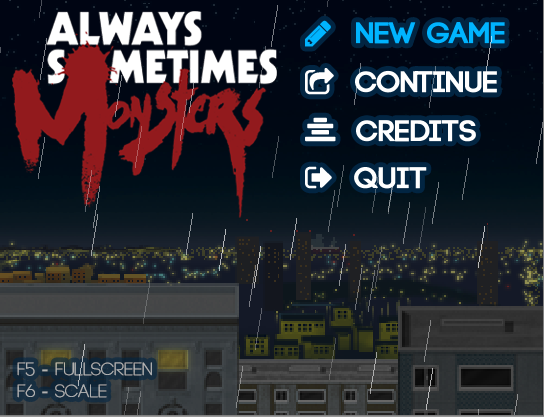In this series we’ll be looking at some principles of game design, particularly as they relate to analysis and criticism.
Genre is a useful concept for consumers and producers of media- identifying and classifying various texts as being part of a certain genre creates a set expectations. Of course, genre is a moving target, and what we understand to be part of a certain genre is constantly evolving and being redefined.
Gaming genres are particularly a particularly tricky grouping, because they don’t universally refer to either the style of play or the narrative component. For example: survival horror tells a potential player two essential things- you’ll be limited on resources and you’ll be scared. This genre name combines game play elements and thematic elements. However, the genre JRPG only really tells us about the game play- it will probably be a party system with turn-based combat, leveling, and character classes. Will have a medieval/fantasy theme? A high-tech space theme? No way to know. On the other hand, themes sometimes stand alone as a genre grouping: for example all Christian games are usually grouped together regardless of game play, games for kids or (notoriously) games for girls usually tell you more about the intended audience than the game itself. Steam’s “female protagonist” grouping would be another example.
Game designers and theorists have spent a good deal of time trying to come up with a more systematic way to tackle genre, without much consensus on the subject. Simon Egenfeldt-Nielsen, Jonas Heide Smith, Susana Pajares Tosca proposed a genre system that focuses only on the strategy a player needs to utilize to win, identifying four genres in gaming (with many subgenres in each): Action, Adventure, Strategy, and Process. At the other end of the spectrum, Mark P. Wolf defines over 40 genres, including things we don’t typically think about, like demos and artificial intelligence. Ernest Adams and Andrew Rollings’ Fundamentals of Game Design attempts to classify gaming genres only by the challenge they pose to the player (and not, implicitly, by elements of theme or narrative), while Phil Co’s Level Design for Games notes that certain genres are naturally tied with specific themes, which in turn influence what players will expect from a “level”.
Whether we’re looking at genre from the perspective of a consumer or a producer, there are several elements we should look at that can, but don’t always, help us identify genre:
- Advancement: How does advancement happen in the game- through levels? Through player achievement?
- Art Style: How does the graphical representation enhance the game play and narrative?
- Challenges: Where does the challenge come in? What specific types of things are challenging, and what skills must the player learn to succeed?
- Choices: What types of choices are available to player, and what sort of impact do those choices have on the final game?
- Emotional Impact: Does the game strive for any particular emotion or tone?
- Exploration: What/how can the player explore? Is the world open or gated?
- Interaction: What in the world can the player interact with, and what can’t she interact with?
- Player actions/abilities: What types of things can and can’t the player character do?
- Player character/party attributes: How is the player character characterized or customized? What do we know about the PC?
- Setting: What is the setting of the game, and how does this impact the options available to the player?
- UI and Information: What information is available to the player, and what is hidden? What options does the UI make available and how does its positioning impact the play experience?
This is, of course, only a partial list, but it gives us a nice grounding in approaching genre from a design-based perspective. In this we can see how narrative and game play are often intimately linked- in survival horror games, for example, the minimalist UI is both a theme and mechanical element. Keeping a fairly limited HUD keeps the player immersed in the game, but also severely limits the information available to them- ideal, because horror games are never games of perfect knowledge. Likewise, limits on interaction often server both a mechanical function (making only certain objects breakable in a game like Payday 2 to help highlight to the player where objectives can be completed) and a narrative function (not allowing you to deviate too far from the set mission and theme of the game).
If you’re interested in any of the sources I’ve mentioned, you can read more about genre and game design from the following:
Adams, Ernest. Fundamentals of Game Design. N.p.: Pearson Education, 2013. Print.
Co, Phil. Level Design for Games: Creating Compelling Game Experiences. Berkeley, CA: New Riders Games, 2006. Print.
Egenfeldt-Nielsen, Simon, Jonas Heide. Smith, and Susana Pajares. Tosca. Understanding Video Games: The Essential Introduction. New York: Routledge, 2008. Print.
Wolf, Mark J. P. The Medium of the Video Game. Austin: U of Texas, 2002. Print.




